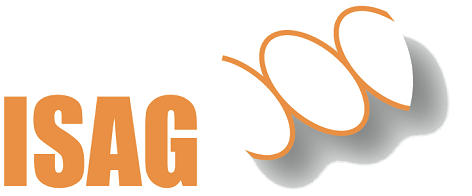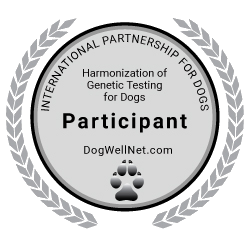Coat colour basic information (cat)
Coat colour agouti
The Agouti gene is responsible for the coat markings “tabby”. If a cat carries the Agouti gene (genotype AA or Aa), its coat shows the typical markings of “tabby”. If the cat is non-Agouti (aa), the coat is single-coloured (solid).
Testinformation coat colour agouti
Coat colour amber
The Amber gene lights up the basic coat colour black especially in Norwegian Forest Cats. Kitten have a black phenotype at birth, then they lighten during their first year of life until they appear almost amber. Only the tip of the tail remains black throughout life.
The mutation responsible for the Amber phenotype (e) is located at the extension-locus (E) which controls the generation of pheomelanin also in other species.
Testinformation coat colour amber
Coat colour chocolate and cinnamon
The coat colours chocolate and cinnamon are caused by mutations in the gene TYRP1 (tyrosinase-related protein 1) which is involved in the production of the black colour pigment eumelanin. This gene locus is called B-locus. The brown variants show a suggested allelic series, with the following dominance pattern: B > b > b1. The B allele is dominant and represents the normal “wild type” black coat colour. Cats with “brown” genotypes bb or bb1 have a chocolate phenotype, whereas cats with the “light brown” genotype b1b1 have a cinnamon phenotype, independent of B and b alleles.
Testinformation coat colour chocolate and cinnamon
Coat colour variation Burma and Siam (point)
The Siamese pattern is reponsible for a phenotype representing a mild form of albinism. This temperature-sensitive mutation produces normal colour pigment only at the cooler extremities of the body, causing a ”mask” of the face as well as darkened paws and tail. The Siamese pattern is also called mask factor or point, since normal pigmentation occurs only at the cooler points of the body.
The Burmese pattern, the mildest form of albinism, is characterized by a normal pigmentation of the extremities and a slight shading of normal body colour.
Two mutations in the gene encoding the enzyme tyrosinase which is required for melanin production are responsible for these colour variants. This gene locus is called C-locus. The wild type allele C is dominant and causes full pigmentation, the Siamese cs allele is recessive and leads to the characteristic distribution of the dark colour on ears, mask, tail and legs when in the homozygous state. The Burmese pattern also follows a recessive inheritance and leads to the coat colour Burmese brown in the homozygous state, with varying degrees of black and dark brown.
Testinformation coat colour variation Burma and Siam (point)
Coat colour variation dilution
The dilute gene is responsible for the intensity of the coat color by affecting the amount of pigments in the hair shaft. The pigment granules are clumped and distributed unevenly along the hair shaft, resulting in a clear color.
The "dilute" phenotype in domestic cats affects both eumelanin and phaeomelanin pathway. The dilution of black results in a gray ("blue") phenotype, while dilute combined with orange appears as a cream color, chocolate results in lilac and orange in creme.
Testinformation coat colour variation dilution
Interpretation of the test result
Each characteristic is evaluated separately and the genotype for each trait is analysed as follows. Two copies for each characteristic exist in the genome of an animal. Therefore, the outcome are three possible genotypes for a recessive trait:
Recessive trait:
Genotype N/N: This animal does not inherit the mutation coding for the characteristic. The animal will never pass a mutated allele to it's offspring.
Genotype N/mut: This animal posses one copy of the mutated allele, which makes it a carrier for the trait. It won't exhibit the phenotype. The offspring of the carrier inherit the mutated allele with 50% probability.
Genotype mut/mut: Carrying two mutated copies of the allele, this animal will exhibit the trait phenotypically. Additionally, 100% of it's offspring inherit the mutated allele.
Questiones?
Please contact our molecular biology team for further questions.
LABOKLIN GmbH und Co.KG
Steubenstraße 4
D-97688 Bad Kissingen
Telefon: +49 (0)971 72020
Fax: +49 (0)971 68546
E-Mail: info@labogen.com
Links
back to genetic characteristics
*) Partnerlaboratory


